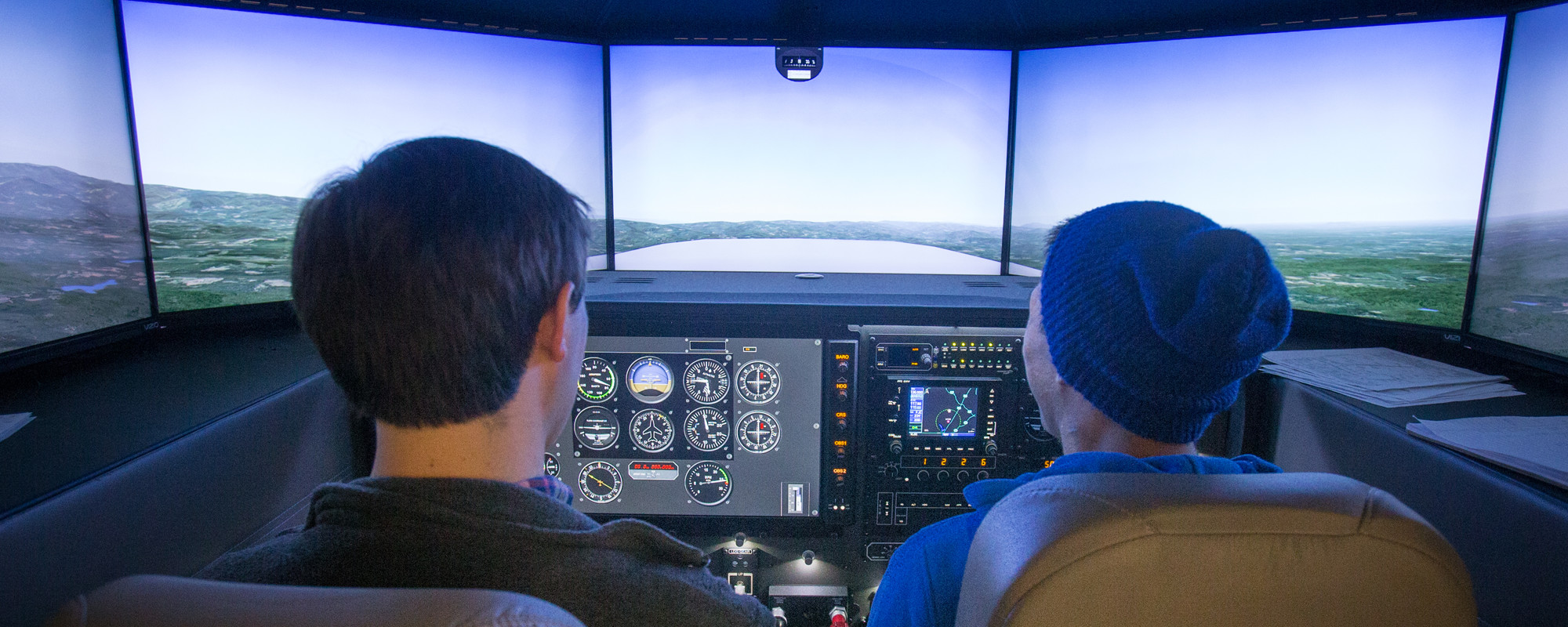“I’m freaking out; my hands are actually sweating,” said third-year aerospace engineering student Aidan Thayer as he practiced a stall in a Cessna 172 airplane.
Fortunately for Thayer, the “Cessna” was actually a flight simulator in a lab at the University of Virginia’s Mechanical and Aerospace Engineering department.
The machine simulates flight so realistically that it can be used as a ground-based flight trainer for future pilots. But its primary purpose at UVA is to enhance the learning experience of students in a third-year “Flight Vehicle Dynamics” course – the theory of aircraft flight – taught by aerospace engineering Professor James McDaniel.
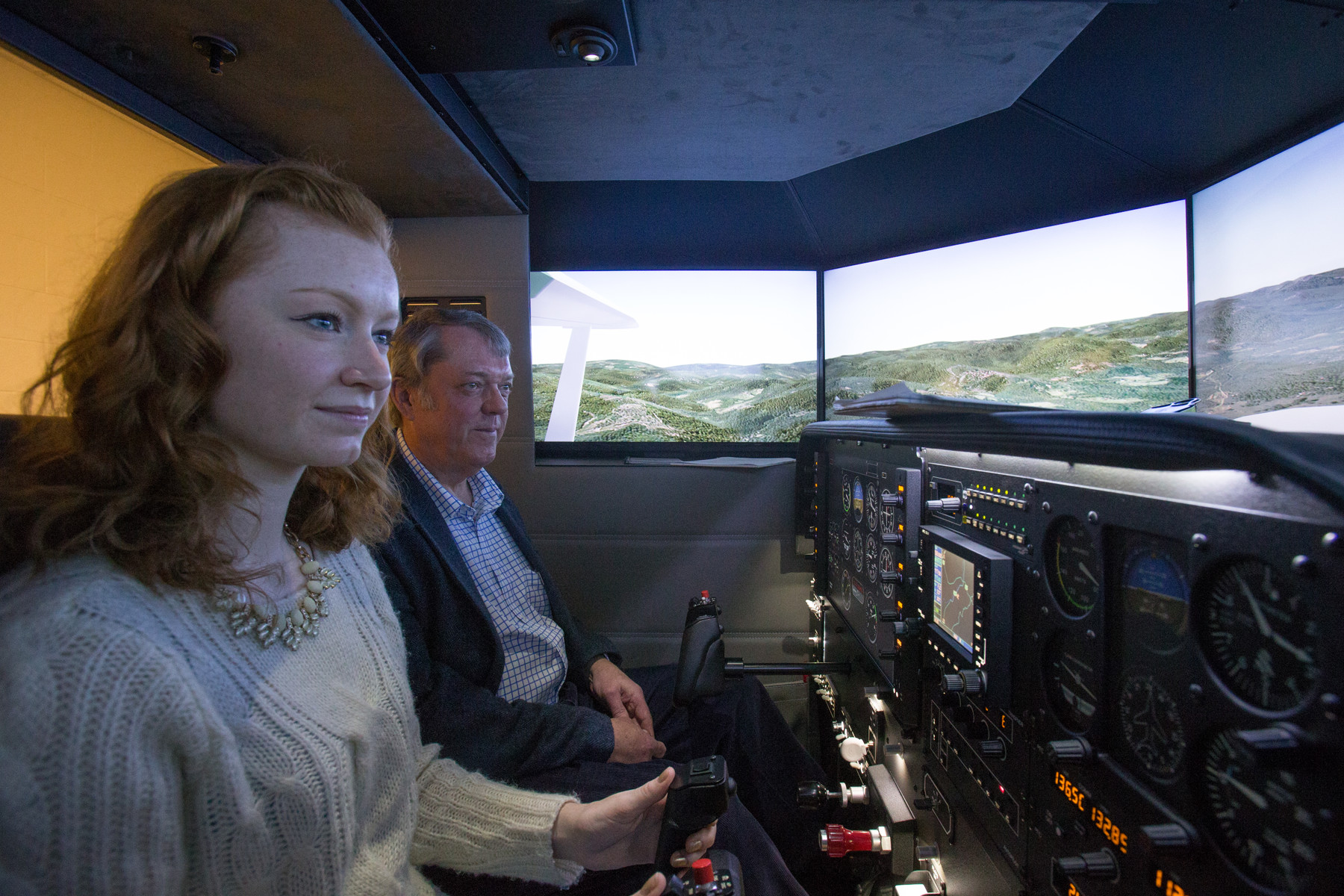
Student Haley Kosheff practices a maneuver as professor James McDaniel observes. (Photos by Sanjay Suchak / University Communications)
“This is so cool,” he said.
McDaniel acquired the $150,000 simulator – which includes a full cockpit with “windows,” working instruments, and a moveable base that makes flights seem incredibly realistic – two years ago after proposing the idea to then-Engineering School Dean James Aylor. He also acquired additional computers and flight simulator software to further enhance the class, and he renovated the lab space to include a big window so students passing in the hall could see other students using the simulator. The lab has helped attract students to declare aerospace engineering as their major.
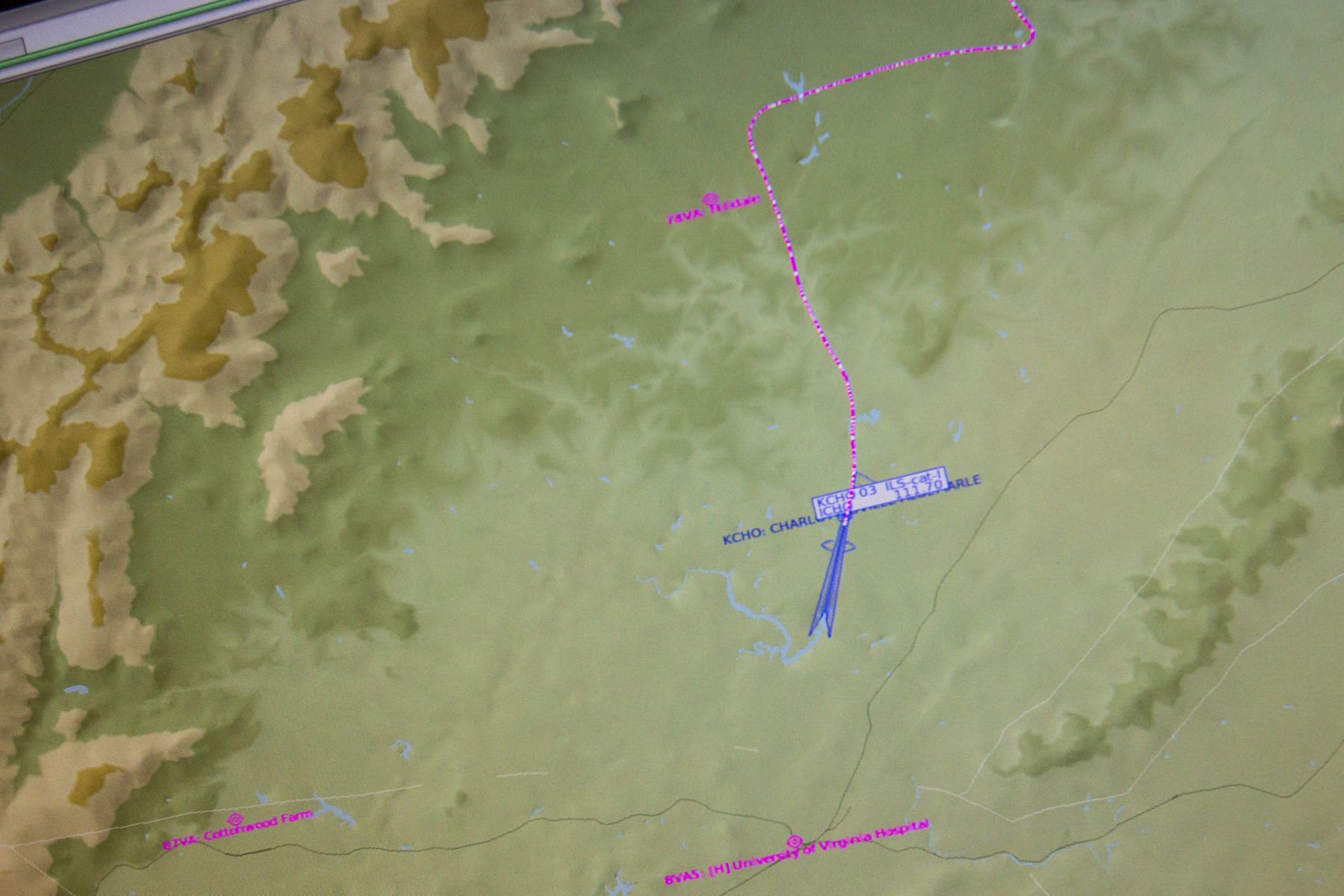
A flight path as portrayed on the flight simulator.
Last spring, the first semester during which the simulator was available, 49 students signed up for McDaniel’s course. Many of them waited a semester to take the course, just to get a chance to use the simulator in lab. Twenty-seven students are enrolled this semester, which McDaniel considers a proper-sized class load.
“This is one lab the students really enjoy coming to,” he said. “We are the only engineering school in the country using a serious flight simulator to enhance the aerospace engineering learning experience.”
On any given day students can be found in the lab either “flying” the primary simulator or one of the two other simulation software programs. They are always eager to take the stick and experience “flight” while comparing their own flight dynamics calculations to what happens in the simulator, such as steep turns or stalls.
During a formal lab session on Tuesdays, their instructor is Adam Wulchin, a fourth-year aerospace engineering major who took McDaniel’s class last year and is now working toward his private pilot’s license. He said he would have come to UVA and his aerospace engineering major even without the flight simulator, but the machine makes the experience even better.
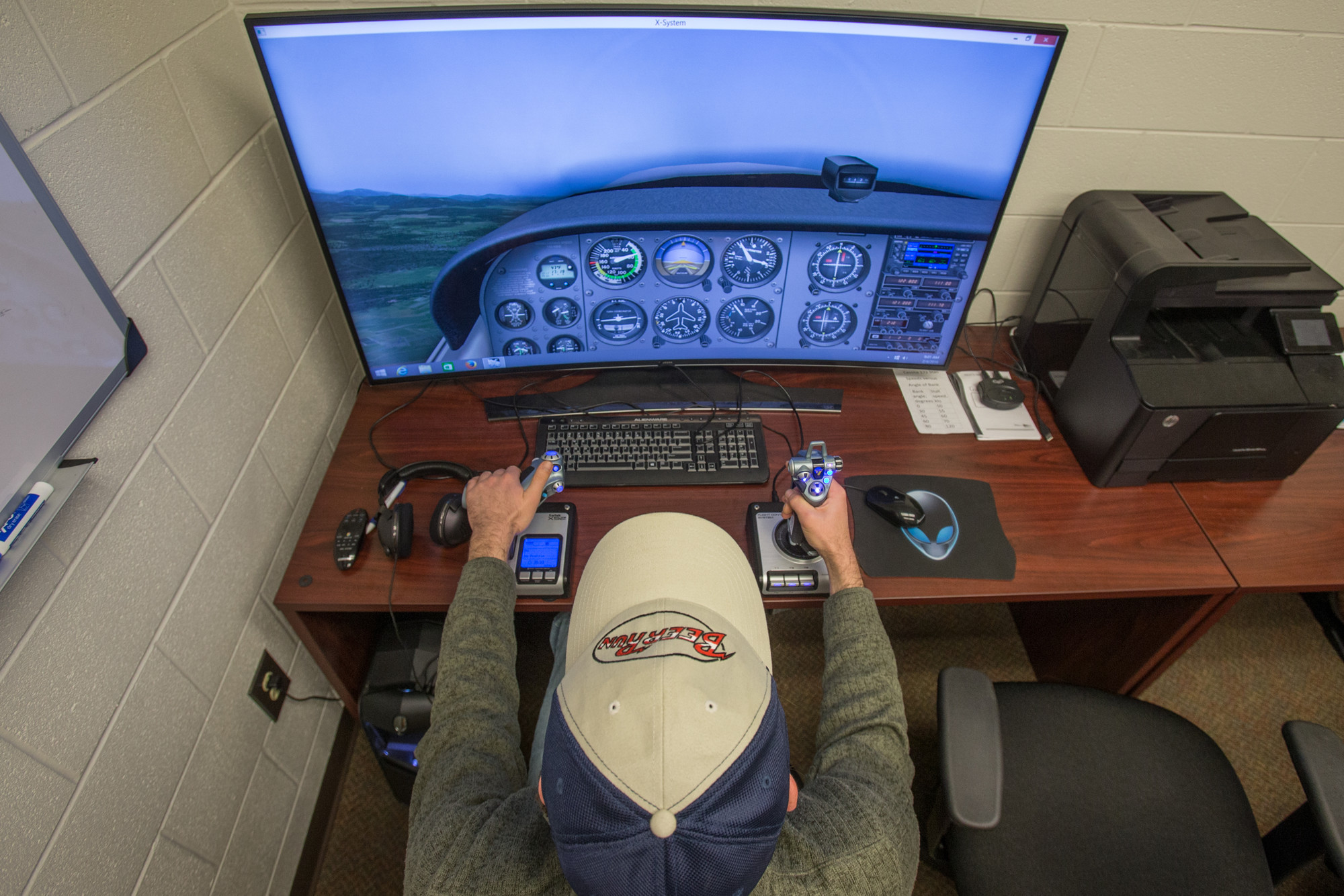
Nicholas Mann practices a maneuver.
Wulchin plans to work in the aeronautics industry, but also is considering military aviation. “This flight simulator has really gotten me interested in flying,” he said.
McDaniel earned his bachelor’s degree in aerospace engineering from UVA in 1971 as a member of the Air Force ROTC program. He then served five years in the Air Force as an air-sea rescue pilot flying HC-130s. After his service, he earned his Ph.D. at Stanford before joining UVA’s engineering faculty in 1983.
“The flight simulator is a great tool for explaining theory with firsthand experience,” he said. “In the classroom, our students learn the physical principles behind various flight maneuvers, and in the simulator they’re able to measure flight conditions and compare with the theory.”
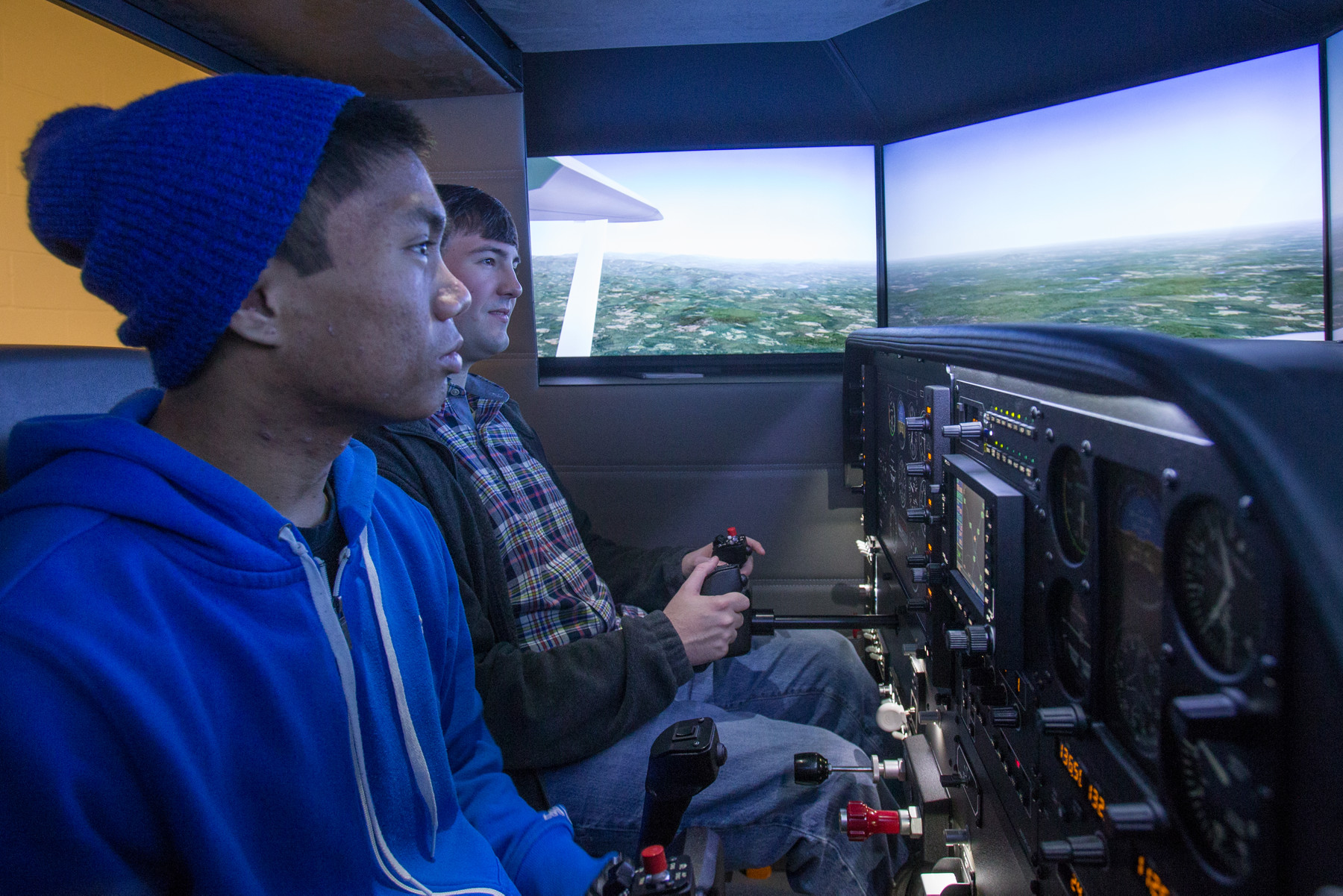
Manny Domingo and Harrison Tyler “fly” over the "Blue Ridge Mountains."
Not only McDaniel’s students are benefiting from the teaching technology. Students in UVA’s Navy and Air Force ROTC programs are using the simulator to introduce potential future pilots to flight.
The machine can simulate 12 airplane models and more than 250 airports around the world, including Charlottesville’s airport. The software can simulate various weather conditions such as winds, clouds, night flight and turbulence. Students learn to read and interpret flight instruments and can feel the “aircraft” move and vibrate in response to their maneuvers.
“This provides a unique experience for the students to learn the principles of flight,” McDaniel said.
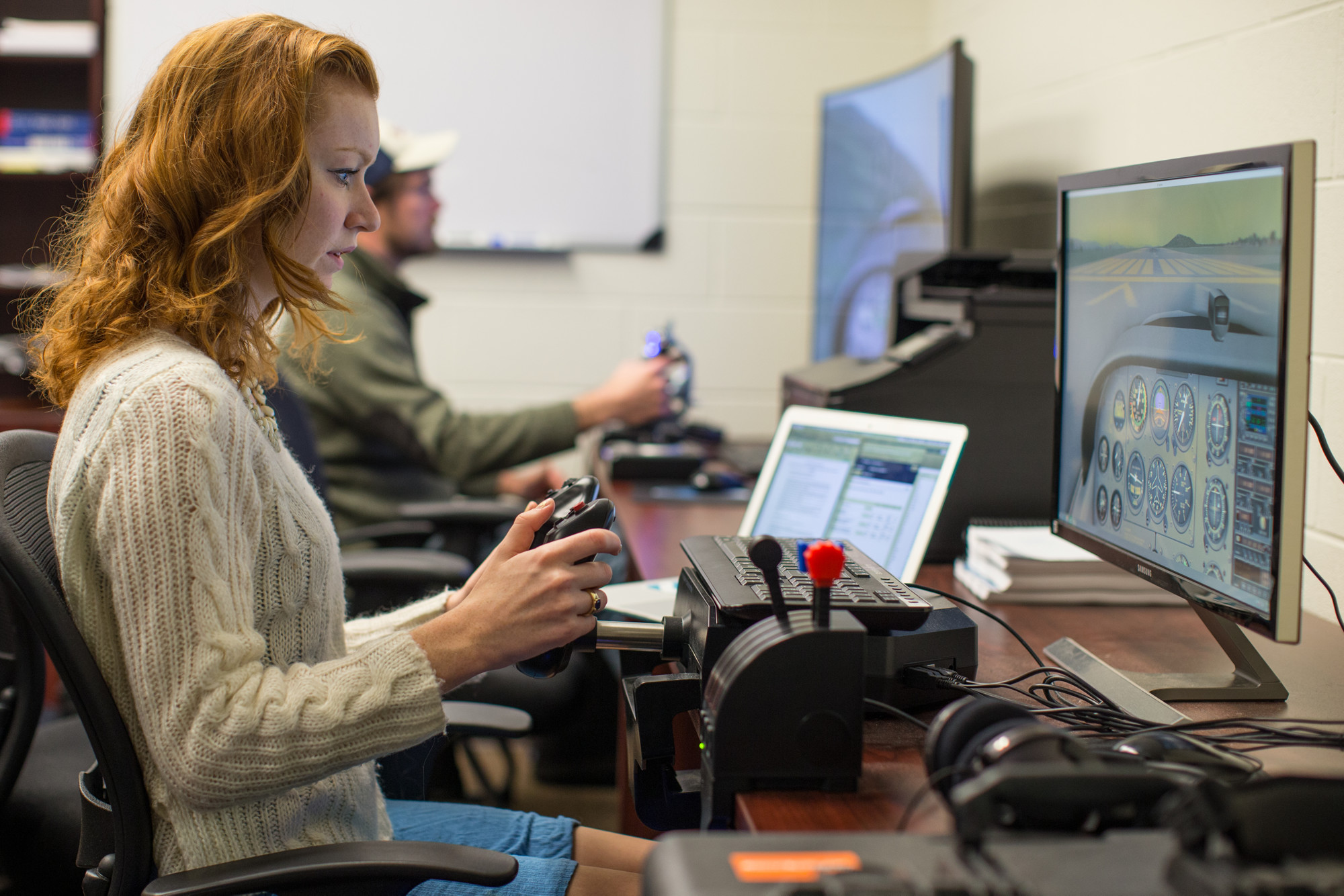
Haley Kosheff uses a computer-based flight simulator.
Media Contact
Article Information
February 16, 2016
/content/flight-simulator-allows-engineering-students-experience-aerodynamics-they-study

